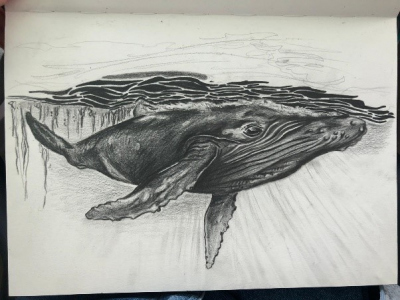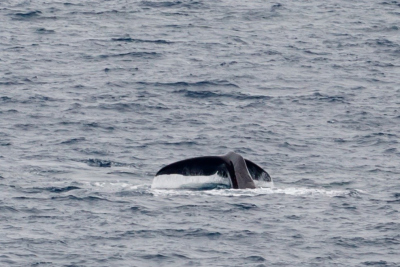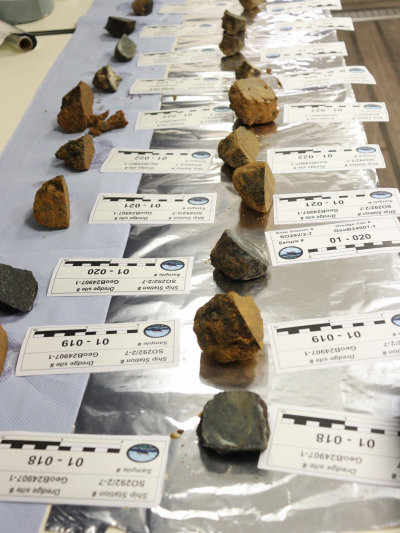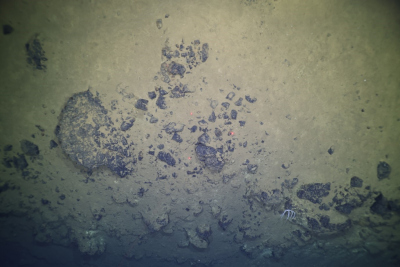- Marine Geotechnics
- Cruises
- SONNE 292-2
SONNE 292-2
FS SONNE - SO292-2
Noumea (New Caledonia) to Dutch Harbor (Alaska, USA)
(24.6. - 21.7.2022)
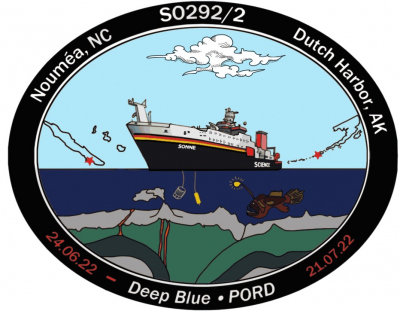
Chief Scientist/ Contact:
Dr. Walter Menapace
Prof. Dr. Achim Kopf
Overview
Expedition SO 292-2 is a transit cruise to study geodynamic processes and geochemical cycles as well as to collect atmospheric data.
The Mariana Trench forearc has characteristic mud volcanoes and structures of deeply mobilized serpentinite mud on the seafloor. Previous expeditions have studied several Mariana mud volcanoes, but no sediments, rocks, or pore water samples have ever been recovered from mud volcanoes more than 50 kilometers from the trench axis.
Atmospheric data are needed to interpret remote sensing methods from space but are also used for global modeling. In addition, automatically measured ocean bottom data will also be processed for an international database.
The primary objectives of SO292/2 are to fill this knowledge gap and: 1) characterize the spatial variability of slab fluids within the forearc environment as a means of tracking dehydration, decarbonization, and water-rock reactions in subduction and supra-subduction zone environments; 2) investigate the metamorphic and tectonic evolution of this non-accretionary forearc region; and 3) investigate the relationships between seismicity and seamount subduction vs. Mud volcano genesis to be illuminated.
While the first two objectives can be achieved by sampling the ocean floor, for the interrelationships we must wait until the long-term pressure and temperature observatories are recovered.
Blog
Departure and getting to know the science party
Here we are… After few months of waiting and preparation, all scientists embarked RV SONNE on 23rd June. After one day of waiting at the harbour, due to several missing luggage, the departure from Noumea (New Caledonia) was scheduled at 10 pm on Friday, 24th June. Between the scientists, some of them have apprehensions about leaving land – are we going to get sea sick? How is it to not see green vegetations for a few weeks? But they all have a common point, they are all VERY excited about the upcoming expedition and science!
The main objective of the SO292/2 is to better understand the dynamics of the Mud Volcanoes (MVs) along one of the deepest trenches in the world, the Mariana Trench. MVs represent a dynamic sedimentary phenomenon by transporting materials upwards from deep depths to the ocean floor. To examine processes of mass transport and geochemical cycling within the Mariana forearc, the scientists use different gears to sample (e.g., Gravity core) and image the seafloor around the MVs.
The science party is composed of very experienced young, early-career scientists and professors with a wide range of specialities from geology to biology and atmospheric sciences. The team of geoscientists is composed of sedimentologists, petrologists, geochemists and geophysicists. The four onboard atmospheric scientists will analyse the variation in the cloud coverage and aerosol distribution, on a south to north Pacific transect. There is also a marine biologist that will have a look at the life in one of the deepest places on earth. With these broad set of knowledge all reunited on one vessel, the science meetings promised to be very exciting and complementary.
Scientists are all waiting for the first core coming on deck … only few more days to go…
Pauline Cornard
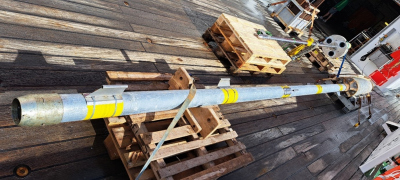
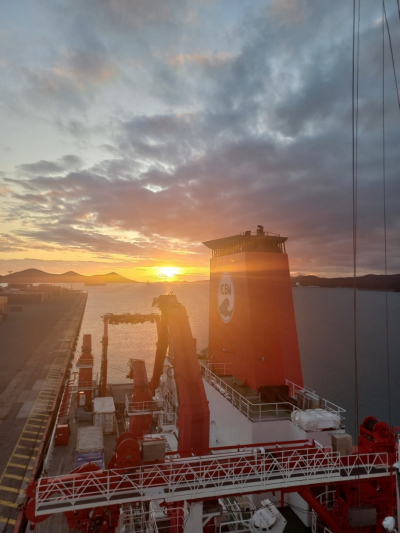
Why mud volcanoes? Why the Mariana forearc
Why mud volcanoes are such a hot topic in Earth Sciences?
Mud volcanoes are mainly associated with subduction zone where the materials from the Earth’s surface are transported to the mantle. Because subduction zone are the principal regions where the most catastrophic earthquakes and successive tsunami occurred on our planet, it is one of the highest priorities to better understand the processes driving to such destructive events. When the plate subducts, there is an increase in pressure and temperature, leading to sediment compaction and subsequent releasing of pore water. Faults and fractures located along the subduction zones, permit to the fluids, originating from the subduction plate interface, to circulate towards the seafloor. These fluids, carrying rocks from the subducting slab, forearc mantle and overlying plate, reach the seafloor and will form, in fine, the so-called mud volcanoes. By sampling mud volcanoes, scientists collect precious information about fluid-rock interaction (such as serpentinization process), physical and mechanical processes occurring in subduction zones. In simple words, mud volcanoes act as a telescope to study processes occurring at great depth non-reachable with the current technologies.
Another exciting curiosity about mud volcanoes is about the deep-marine microbial life sitting down around these structures. Indeed, mud volcanoes do not only expel slurries and rocks but also a significant amount of gas and especially hydrogen and methane which are geofuels for the deep biosphere. Physico-chemical conditions such as pH, temperature and generation of such geofuels in serpentinizing environment provide a sanctuary for life to thrive in otherwise deep desolated seafloor. Scientists use biomarkers (e.g., lipidomics) as a toolbox to better understand the microbial life colonizing these mud volcanoes. Understanding microbial life down our oceans can help to decipher the evolution of life on Earth, and answer the question if there is life in our universe by extrapolating our knowledge to extra-terrestrial realm.
Why study mud volcanoes in the Mariana forearc?
The Mariana subduction system is related to the Pacific Plate subducting beneath the Philippine plate. Certainly, because the Mariana subduction system is one of the oldest of our planet, it contains more than 100 seamounts along its trench where a majority of them are identified as mud volcanoes. Compared to all others mud volcanoes, the mud volcanoes along the Mariana Trench are up to 10 times bigger in size reaching heights of 2.5 km and diameters of 50 km and expulse fluids and muds originating from up to 30 km of depth, making them unique worldwide.
These features are composed of blue serpentine mud and clasts of various nature (ultramafic, mafic, metamorphic and sedimentary) which most likely reflect processes such as upper-plate hydration and obduction of the lower plate. A variation of pore water geochemistry (fluid recovered within the sediments) and solid products of the mud volcanoes is observed with increasing distance from the trench (and thus increasing depth-to-slab). They hence provide direct insights into geological subduction processes at increasing depths.
The mud volcanoes of the Mariana subduction system are the only mud volcanoes worldwide that root at such great depth and are thus of valuable scientific importance. During SO292/2, two key mud volcanoes are targeted: the closest to the trench (< 35 km) just few kilometres above the subducting slab; and the most active mud volcano of the Mariana system located at a distance <55 km of the trench.
Pauline Cornard
Whales, mysterious and fascinating animals
With a maximum size of 15-18 meters and a weight of 35 to 45 tons, sperm whales can dive up to 3200 metres deep to hunt for mostly squids and sharks. They are easily recognized by their massive heads and prominent rounded foreheads. Most of the human kind has seen a whale only on TV or in the internet. We as part of the SO292/2 science party got fortunate enough to see a tiny sight of these enormous creatures, when they surface to breath. Many times, they travel in large groups called pods, consisting mostly of females and their calves. Just like most of us like travelling, whales are travellers too. The male members of the pods migrate over long distances spanning across latitudes. These gigantic creatures venture across from one hemisphere of our planet to another in search for food, breeding grounds and warmer climate.
It is still not clear why their heads hold large quantities of a substance called spermaceti. Scientists believe it may help the animal regulate its buoyancy. Moreover, these mysterious mammals have the largest brain of any animal known to have lived on Earth.
These little-known mammals communicate via echolocation. They emit sounds that travel underwater until they encounter objects then bounce back to their source. They also use their echolocation to locate their prey such as squid. A dive can last up to two hours and when the animals resurface afterwards, their gasps for air can still be heard a kilometre away. Just in that brief moment we, the science party, have a chance to share a small moment with these mighty whales.
Sources:
https://naturdetektive.bfn.de/lexikon/tiere/saeugetiere/pottwale.html
https://www.nationalgeographic.com/animals/mammals/facts/sperm-whale
https://www.wwf.de/themen-projekte/artenlexikon/pottwal
Anna
Krug
